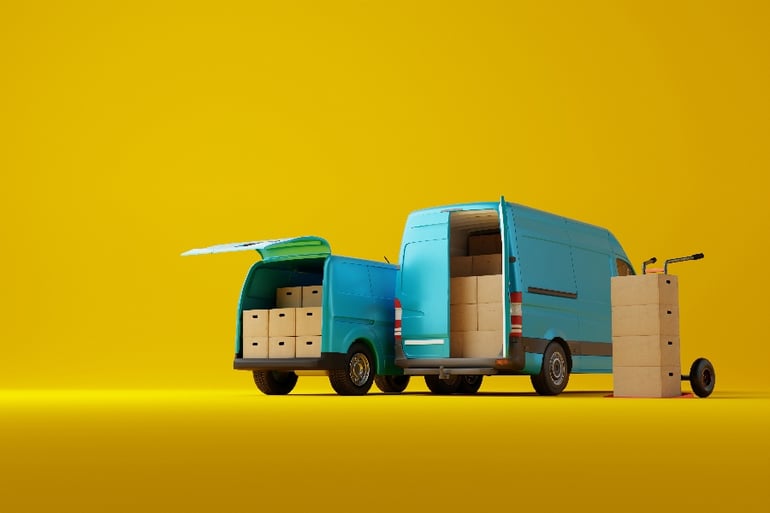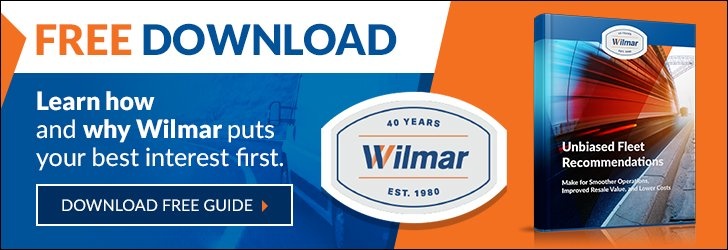
When you are operating a commercial fleet, it is important to know how your fleet and individual vehicles are classified. The exact rules regarding commercial vehicles can determine everything from your insurance policies to your driver licensing obligations. Commercial vehicle denominations can influence your paperwork and record keeping, your finances, and even your hiring practices and driver policies.
This is because the rules change based on whether you are talking about commercial and non-commercial vehicles - as well as fleet vs non-fleet company vehicles. Can you insure them as a group or individually? Do your drivers need a CDL to legally (and safely) operate your fleet vehicles? Knowing the right vehicle denominations and related regulations is important for any business.
Let's dive into what you need to know about commercial vehicle denomination.
What Defines a Commercial Vehicle
Commercial vehicles are classified separately from personal vehicles if they are used for commercial purposes. However, the design and utility of the vehicle can also determine whether vehicles in your fleet are denominated as commercial vehicles or not. A commercial vehicle conforms to one or more of the following qualifications.
Seats 8+ People, Including the Driver
Any vehicle with a human capacity of eight or more seats is classified as a commercial vehicle. The seat count includes the driver, and may include fold-out belted seats for additional team members. This includes passenger vans and cargo vans with temporary seating.
Gross Vehicle Weight of 2,000+ lbs
A vehicle is upgraded from a personal vehicle to a commercial vehicle once the gross vehicle weight reaches 2,000 lbs. This means it adds more wear-and-tear to the roads and carries more inertia if involved in an accident.
Transports Hazardous Materials
Any vehicle that must post a legal placard for carrying hazardous materials is also denominated as acommercial vehicle. While this does not include common chemical cleaning supplies (which one could argue are hazardous) but does include things like tanks of flammable gasses.
Transports 15+ Non-Paying Passengers
If your vehicle ever transports fifteen or more people who are non-paying passengers, it has become a commercial vehicle.
Used for Routine Commercial Purposes
And, of course, almost any vehicle can be classified intentionally by the business as a commercial vehicle if it is owned by the company and regularly used for commercial services.
Which Commercial Vehicles Require a CDL to Operate?
There is also a very important denomination between normal commercial vehicles and larger or more hazardous commercial vehicles that require CDLs (commercial drivers' licenses) to operate. If your fleet includes any of these vehicles, make sure every operator has their CDL and is up-to-date on safe commercial driving practices. This will ensure DOT compliance in your service area and/or or across state lines.
CDLs are required any time it is determined that there is a greater risk and that a more highly skilled and trained driver is necessary to mitigate that risk on the road.
Transports Hazardous Materials
Transporting hazardous materials makes any vehicle a commercial vehicle. It also requires that the driver be fully trained and licensed in commercial vehicle safety.
Seats 16+ People, Including the Driver
If your commercial vehicle is designed with 16 or more seats, including the driver, then it will require a CDL to operate. This includes buses, travel coaches, and more unique tourist vehicles.
Gross Vehicle Weight of 26,000 lbs
Any time a vehicle is large enough to weigh over 26,000 pounds, your drivers will need commercial driver's licenses to legally operate. Going through the CDL process can ensure that these extra-heavy vehicles are safe on the road and not involved in avoidable high-inertia accidents.
Combined (Towing) Vehicle Weight of 26,000+ lbs, If Any Towed Vehicle is 10,000+ lbs
Lastly, your team will need CDLs if a towing situation is ever created where towed vehicles weigh over 10,000 pounds, and the total combined vehicle (tower and towed) weights equal greater than 26,000 pounds.
Fleet vs Non-Fleet Commercial Vehicles
Lastly, there's a functional difference between vehicles classified as fleet vehicles vs non-fleet vehicles. If you have a group of company vehicles classified as a fleet, you can find things like single-policy fleet insurance, including the ability to assign drivers to the fleet instead of individually adding drivers to each vehicle's policy. Non-fleet vehicles are insured and managed separately.
Whether you choose to classify your vehicles as fleet or non-fleet will depend on your business model and the insurance options available to you.
Managing your Commercial Vehicle Denominations with Wilmar Inc
Do you need a fleet of commercial vehicles, a plan to make sure all your drivers have CDLs, or a guide through fleet vehicle insurance? Wilmar has you covered. Our team of feet acquisition and fleet management experts can help you build, adapt, insure, and operate your fleet with the best approach for your unique business model.
Contact us today to learn more.








